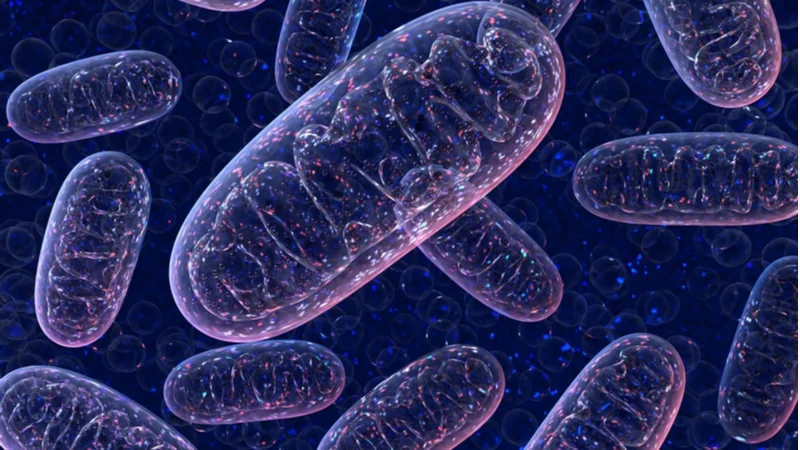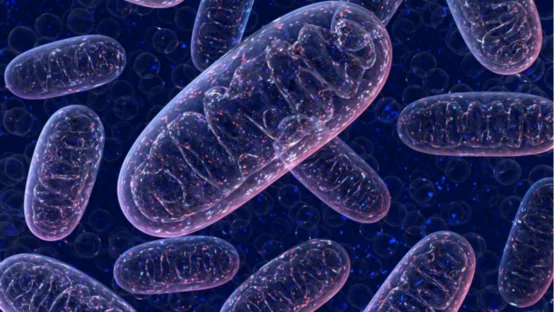Publishing in Aging, a group of Korean researchers has discovered a compound that affects the way our mitochondria process energy, ameliorating cellular senescence.
A deep dive into biochemistry

Read More
To begin their paper, the researchers discuss the role of the SASP, the inflammatory cytokine IL-33, and the relationship between mitochondria, ADP, and ATP. It is well known that the mitochondria are the powerhouses of the cell, but it is less known that they form an electrical potential across their membranes. A compound called ATP synthase 5, which itself is formed of protein subunits, uses this electrical potential in order to turn ADP and the electrical potential into ATP, which our cells use as energy [1].
Some of the subunits of ATP synthase 5 are referred to as alpha and beta. These two compounds form a heterodimer, a complex between two molecules. The catalytic site in the center of this heterodimer is where the conversion from ADP to ATP actually occurs [2].
Where IL-33 comes in
Seeking to confirm and understand a link between IL-33 and cellular senescence, the researchers tested 20 different compounds known to inhibit IL-33. They found that these compounds acted directly on a protein with the unusual name of 14–3–3?. Research was continued on the most promising of these compounds, which was defined as the one that promoted cellular proliferation the most: KB1541.
The researchers found that 14–3–3ζ, which is promoted by KB1541, regulates the function of ATP synthase 5, and computer modeling helped them to understand the exact physical way in which this occurs. They also used a specific point mutation of mice in order to confirm this; mice with slightly altered 14–3–3ζ received no benefit from KB1541.
A fundamental antioxidant
The effects of the regulation were demonstrated by how the resulting ATP synthase complex processes energy. The researchers found that KB1541 caused more ATP to be synthesized from oxygen phosphorylation and less from oxygen-less glycolysis. The amount of reactive oxygen species (ROS), a well-known contributor to cellular damage, was decreased in kind.
This reduction in ROS was then shown to lead to a decline in the characteristics of cellular senescence. KB1541 is not a senolytic; it does not kill senescent cells. Rather, it seems to function as a senomorphic, transforming cells from a senescent state into a more healthy one, as affected cells lost much of their mitochondrial mass, a characteristic of senescence.
Additionally, KB1541 was shown to increase autophagy, the method by which cells consume the damaged parts of themselves. SA-ß-gal, a well-known marker of cellular senescence, was found to be decreased.
Conclusion
Life extension research does not often dive this deeply into the specifics of biochemistry. Understanding the basic biology of every part of the human body would require a phenomenally complex computer system, and current technology only allows us to research one small part of biology at a time.
However, this research seems to have borne fruit. By directly affecting how our mitochondria process oxygen when forming energy from ATP, KB1541 appears to be a potentially viable method for tackling cellular senescence and possibly some aspects of mitochondrial dysfunction. Further research will need to be done to determine if this compound can ameliorate at least one of the root causes of aging, and age-related diseases, in human beings.
Literature
[1] Kühlbrandt, W. (2015). Structure and function of mitochondrial membrane protein complexes. BMC biology, 13(1), 1-11.
[2] Féthière, J., Venzke, D., Diepholz, M., Seybert, A., Geerlof, A., Gentzel, M., … & Bo¨ttcher, B. (2004). Building the stator of the yeast vacuolar-ATPase: specific interaction between subunits E and G. Journal of Biological Chemistry, 279(39), 40670-40676.



